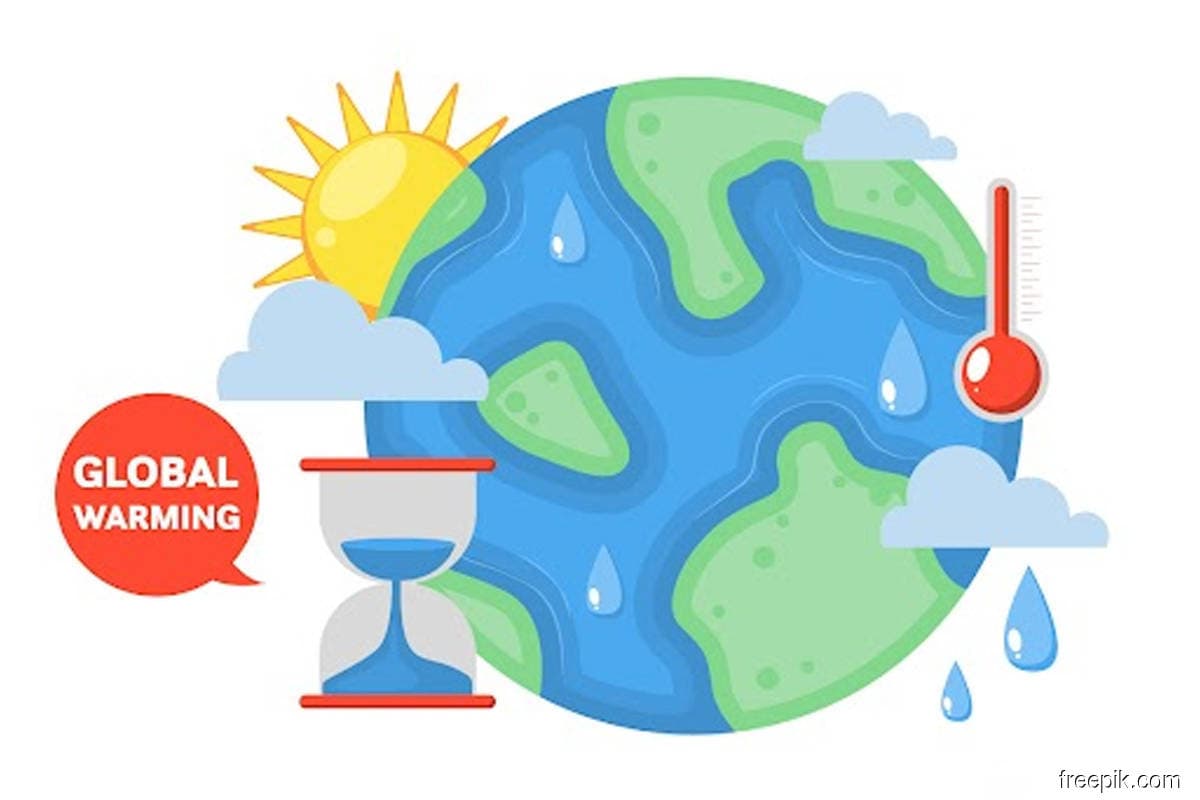
This article first appeared in The Edge Malaysia Weekly on August 22, 2022 - August 28, 2022
The race to net-zero is on, with countries and companies pledging to reduce their carbon emissions in the next few decades. This is all done in hopes of limiting the rise in global average temperatures to below 1.5°C. If it goes beyond that number, there will be irreversible impacts on the earth and our way of living.
This climate target-setting language, however, often uses scientific terminologies and acronyms that may not make sense to the general public. Here are some common ones:
Global warming: The increase in global average temperature from human-made greenhouse gases. Scientists expect global average temperatures to reach or exceed 1.5°C within the next few decades, according to the Intergovernmental Panel on Climate Change (IPCC). The climate had already warmed up by 1.1°C since pre-industrial times (starting in 1850), according to a 2021 IPCC report.
Climate change: The long-term shifts in temperature and weather patterns, such as precipitation and wind patterns. Some of these shifts are natural, but human activities have been the main driver of these changes since the 1800s, owing to the burning of fossil fuels, according to the United Nations (UN). Greenhouse gases generated from the burning of fossil fuels trap the sun’s heat on the earth, resulting in higher temperatures.
The term is often confused with “global warming”. However, the latter refers specifically to the rise of global temperatures. Earth is a connected system, so rising temperatures also result in other climate change impacts such as droughts, water scarcity, rising sea levels and catastrophic storms.
IPCC: Stands for the Intergovernmental Panel on Climate Change, which is a body under the UN that assesses the science related to climate change. The IPCC’s objective is to provide governments with scientific information to develop climate policies. Its reports are key inputs in international climate change negotiations. Thousands of scientists worldwide contribute to the work of the IPCC.
Biodiversity crisis: A landmark report from the Intergovernmental Science-Policy Platform on Biodiversity and Ecosystem Services in 2019 highlighted that nature is declining globally at unprecedented rates in human history. Around one million animal and plant species are now threatened with extinction, many within decades, owing to human activities.
Paris Agreement: A legally binding international treaty on climate change. The goal of this landmark agreement, signed in 2015, is to limit global warming to below 1.5°C. For the first time, it brought together all nations to undertake ambitious action to combat climate change and adapt to its effects, according to the UN. Financial, technical and capacity support is provided to countries that need it. Signatory parties have to communicate their plans for climate action through nationally determined contributions.
UNFCCC: Stands for the United Nations Framework Convention on Climate Change. The entity is tasked with supporting the global response to climate change. Established in 1992, it facilitates intergovernmental climate-change negotiations, assists in the analysis and review of climate change information, and organises between two and four negotiating sessions each year, one of which is the Conference of the Parties.
COP: Stands for the Conference of the Parties. It is the supreme decision-making body of the UNFCCC. All signatory parties to the Convention are represented at the COP, which meets annually. The first COP was in Germany in 1995. The Paris Agreement was signed in the 2015 COP in France. The upcoming COP27 will be held in Egypt. A key task for the COP is to review the national communications on climate action and emissions inventories submitted by signatory parties.
Save by subscribing to us for your print and/or digital copy.
P/S: The Edge is also available on Apple's AppStore and Androids' Google Play.